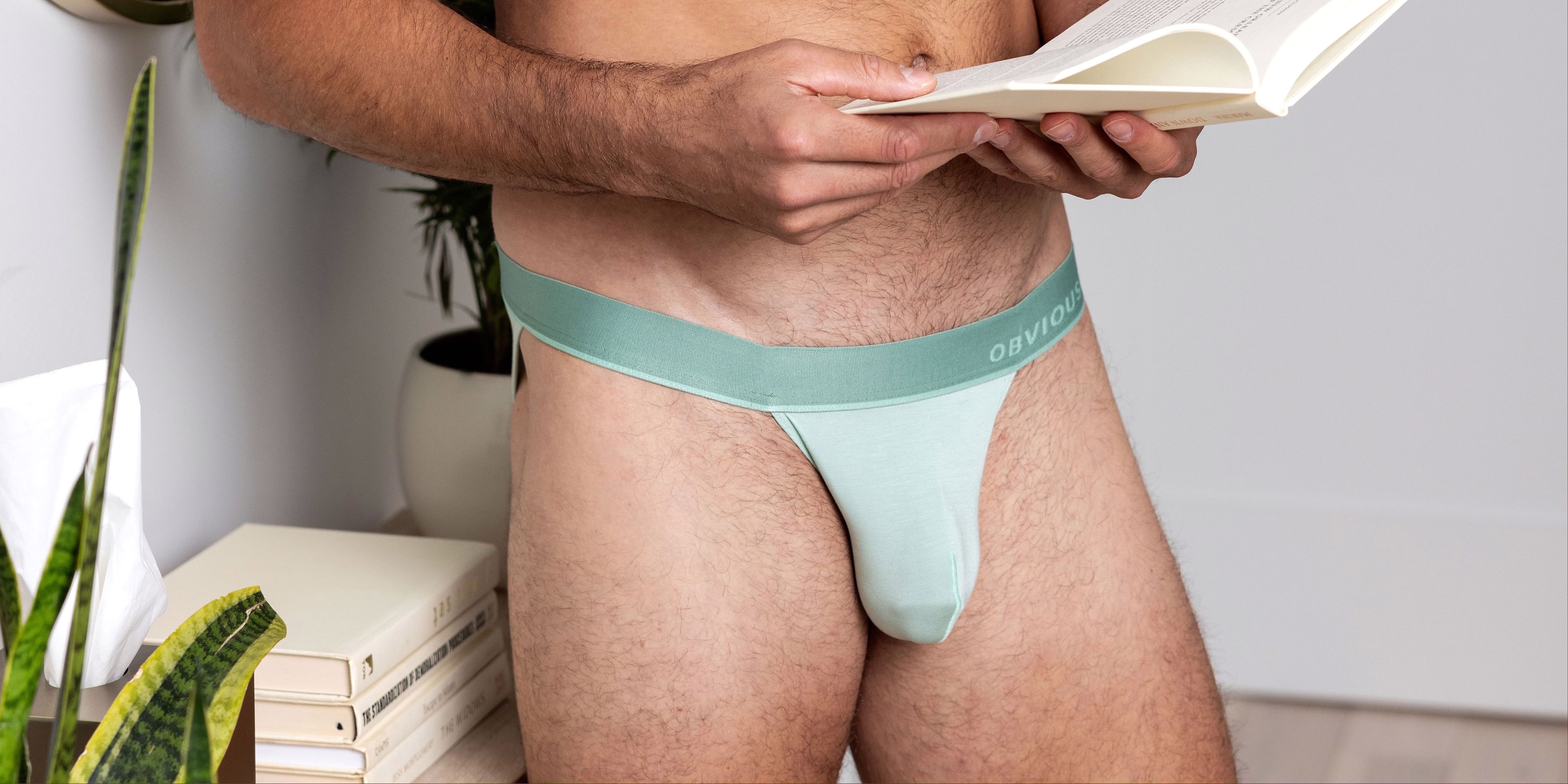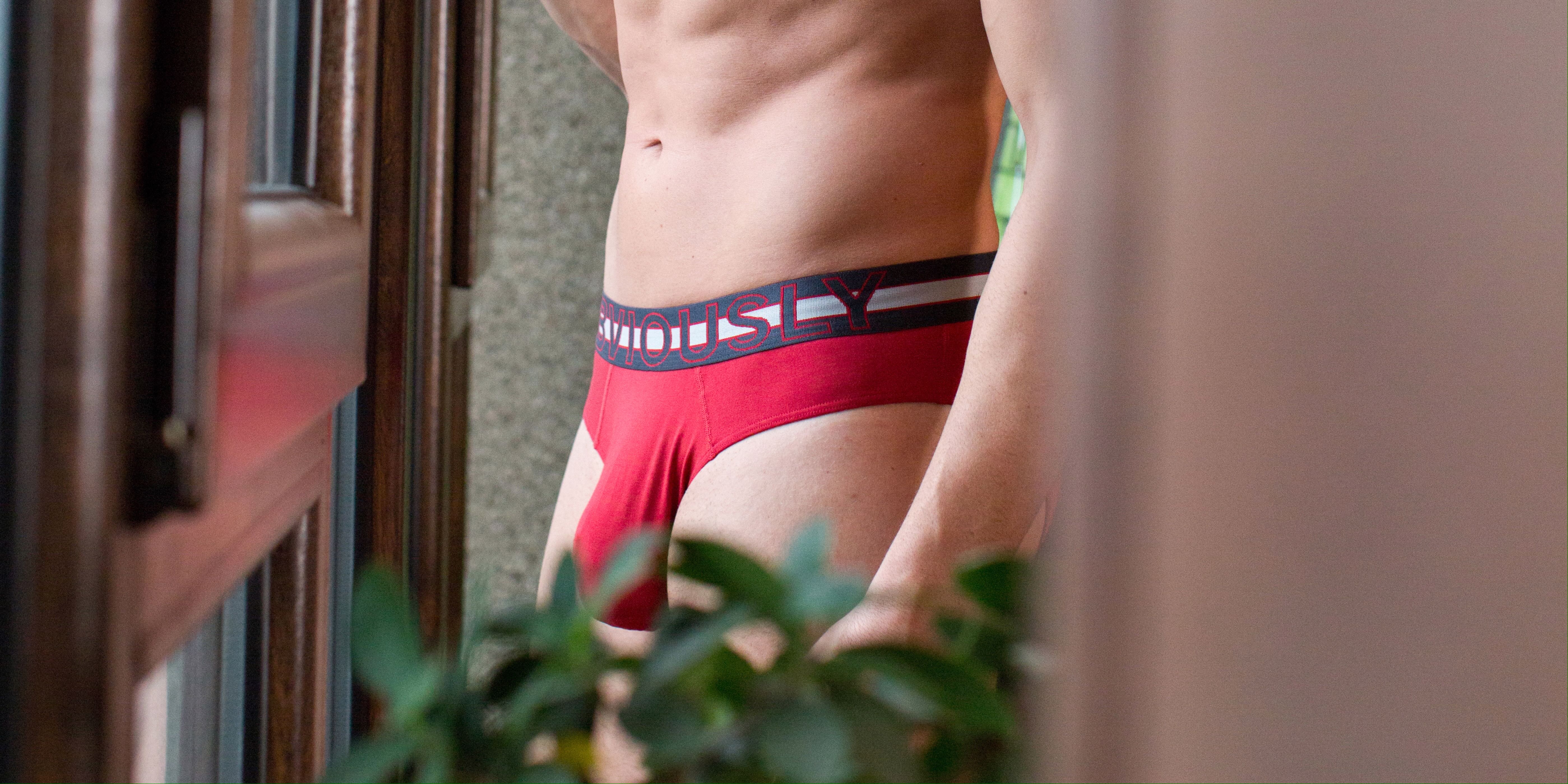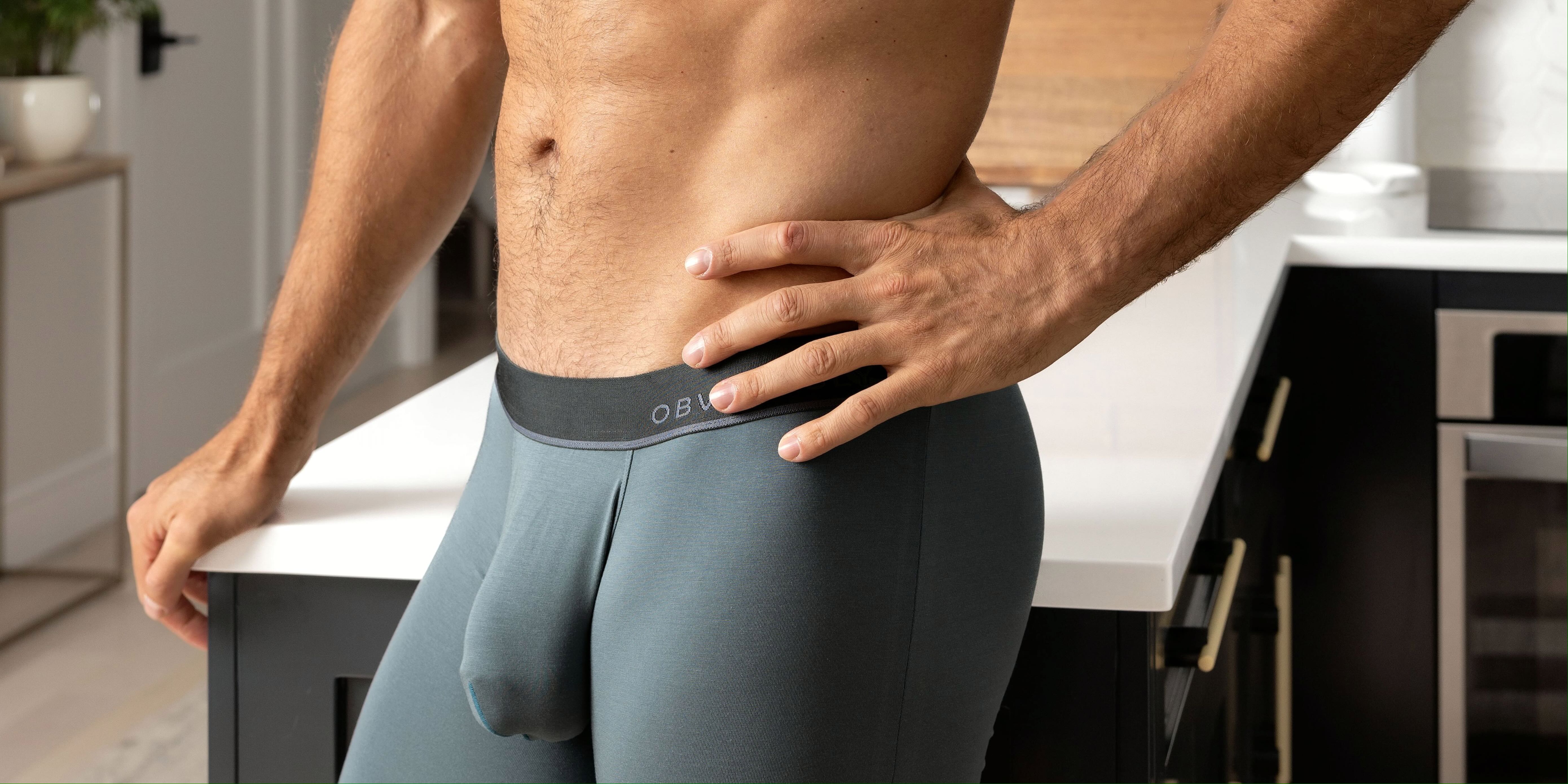
How Should a Thong Fit: Thong Size Guide
For men who are fashion-conscious and comfort-seekers, the quest for the perfect thong can often be challenging. With so many options available, knowing how a thong should fit is essential to making the right choice. In this comprehensive guide, we'll walk you through everything you need to know about thong sizing, helping you find the perfect fit that enhances your physique and boosts your confidence.
Why The Right Thong Size Matters?
Choosing the right thong size is crucial for several reasons. A properly fitted thong ensures maximum comfort, preventing issues like chafing, irritation, and discomfort that can arise from a poor fit. It also enhances your physique, providing a sleek and smooth appearance under clothing, which can boost your confidence. Additionally, the right size ensures that the thong stays in place during various activities, whether you're working out, modeling, or simply going about your day. Ultimately, understanding and selecting the correct thong size contributes to both your comfort and overall sense of well-being.
How Should a Thong Fit
The proper fit for a thong:
- Measure Your Waist and Hips: Use a flexible measuring tape to measure around your natural waistline and the fullest part of your hips. These measurements will help you determine the correct size according to the brand's size chart.
- Check the Waistband: The waistband of the thong should sit comfortably around your waist without digging into your skin or feeling too loose. It should provide a snug fit that stays in place without causing discomfort.
- Assess the Front Coverage: The front part of the thong should cover your genital area adequately without being too tight or too loose. It should provide support and a smooth appearance under clothing.
- Evaluate the Back Strap: The back strap, or the thong part, should rest comfortably between your buttocks. It should not cause chafing or irritation and should stay in place without riding up or shifting.
- Check for Overall Comfort: Move around, sit, and bend to ensure the thong remains comfortable and stays in place during various activities. There should be no pinching, bunching, or discomfort.
- Consider the Fabric: Choose a fabric that feels comfortable against your skin. Breathable materials like bamboo and moisture-wicking fabrics are ideal for everyday wear and physical activities.
By following these steps, you can ensure that your thong fits properly, providing both comfort and confidence throughout the day.

Thong Size Guide
Men's Thong Underwear Guide
|
Size |
Waist Measurement (inches) |
Hip Measurement (inches) |
|
XS |
26-28 |
32-34 |
|
S |
28-30 |
34-36 |
|
M |
30-32 |
36-38 |
|
L |
32-34 |
38-40 |
|
XL |
34-36 |
40-42 |
|
XXL |
36-38 |
42-44 |
|
XXXL |
38-40 |
44-46 |
Note: Sizes may vary slightly depending on the brand. Always refer to the specific brand's size chart for the most accurate fit.
Should You Size Up or Down For Thongs?
When it comes to choosing the right size for thongs, it's generally recommended to stick to your usual underwear size. However, if you're between sizes, consider the fabric and style of the thong. For stretchy, elastic materials, you might opt to size down for a snug fit that stays in place. Conversely, if the thong is made from less stretchy fabric like cotton or has a more structured design, sizing up can provide additional comfort and prevent any digging or irritation. Ultimately, the goal is to ensure that the thong fits comfortably without being too tight or too loose, much like your regular underwear.
What Fabric and Material Is Best For Thongs?
- Bamboo:
- Breathable: Bamboo fabric is highly breathable, making it ideal for all-day wear.
- Moisture-Wicking: It effectively wicks away moisture, keeping you dry and comfortable.
- Soft and Hypoallergenic: Bamboo is naturally soft and gentle on the skin, reducing the risk of irritation and allergies.
- Eco-Friendly: Bamboo is a sustainable and environmentally friendly material.
- Micromodal:
- Ultra-Soft: Micromodal is known for its incredibly soft texture, providing a luxurious feel against the skin.
- Lightweight and Breathable: It offers excellent breathability and is lightweight, making it perfect for everyday wear.
- Moisture-Wicking: Micromodal efficiently absorbs and evaporates moisture, keeping you dry and comfortable.
- Durable: This fabric is highly durable and retains its softness and shape even after multiple washes.
- Silk:
- Luxurious Feel: Silk is renowned for its smooth and luxurious texture, providing a high-end feel against the skin.
- Temperature Regulating: Silk naturally regulates temperature, keeping you cool in the summer and warm in the winter.
- Hypoallergenic: Silk is gentle on the skin and less likely to cause irritation or allergic reactions.
- Moisture-Wicking: While not as effective as bamboo or micromodal, silk does have some moisture-wicking properties.
- Lace:
- Aesthetic Appeal: Lace adds a touch of elegance and sophistication, making it a popular choice for special occasions.
- Breathable: Lace is generally breathable, allowing for good air circulation.
- Flexible: Often combined with other materials, lace can offer a good amount of stretch and flexibility.
- Delicate: Lace is more delicate and may require special care to maintain its appearance and integrity.
- Do Not Use Cotton:
- Less Breathable: Cotton is less breathable compared to bamboo and micromodal, which can lead to discomfort and moisture retention.
- Prone to Shrinkage: Cotton tends to shrink after washing, which can affect the fit of the thong.
- Not Moisture-Wicking: Cotton absorbs moisture but does not wick it away, potentially causing discomfort and irritation.
How Does Wearing a Thong Affect Fit and Comfort?
Wearing thongs can significantly impact both fit and comfort, depending on how well it is sized and designed. A properly fitted thong should feel almost unnoticeable, providing minimal coverage while ensuring maximum comfort. The right fit prevents issues like chafing, irritation, and discomfort, allowing for a smooth and seamless appearance under clothing. Additionally, a well-fitted thong stays in place during various activities, offering support without causing any pinching or bunching. The choice of fabric also plays a crucial role; breathable, moisture-wicking materials like bamboo or micromodal enhance comfort by keeping you dry and reducing the risk of irritation. Ultimately, the key to a comfortable thong lies in finding the right size and material that suits your body and lifestyle.
What Style Of Thongs Is The Most Comfortable?
- Classic Thongs:
- Design: Features a narrow waistband and a minimal back strap.
- Comfort: Offers a balance of coverage and minimalism, making it suitable for everyday wear.
- Best For: Those who prefer a traditional thongs style with moderate support.
- G-String Thongs:
- Design: Has a very thin waistband and a string-like back.
- Comfort: Provides the least coverage, which can be very comfortable for some but may take getting used to for others.
- Best For: Those who want minimal visibility under tight clothing and are comfortable with less fabric.
- T-Back Thongs:
- Design: Similar to a G-string but with a T-shaped back strap.
- Comfort: Offers a bit more structure than a G-string while still being minimalistic.
- Best For: Those who want a blend of minimal coverage and a bit more support.
- V-String Thongs:
- Design: Features a V-shaped back strap that provides a unique fit.
- Comfort: Offers a comfortable fit with minimal fabric, reducing the risk of irritation.
- Best For: Those who prefer a stylish and unique thong design with minimal coverage.
- Pouch Thongs:
- Design: Includes a contoured pouch for added support and comfort.
- Comfort: Provides excellent support for the genital area, making it very comfortable for extended wear.
- Best For: Those who need extra support and prefer a more structured fit.
Each style offers unique benefits, and the most comfortable thongs will depend on personal preference and specific needs.
Why Are Some Thongs Uncomfortable?
Poor Fit
One of the primary reasons some thongs are uncomfortable is due to poor fit. If the thong is too tight, it can dig into your skin, causing irritation and discomfort. Conversely, if the thong is too loose, it may not stay in place, leading to constant adjustments. Unlike other types of underwear, thongs require a precise fit to ensure comfort. It's essential to choose the right size and consider the stretch of the fabric to avoid these issues.
Inadequate Fabric
The type of fabric used in thongs can significantly impact comfort. Materials that lack breathability or stretch can cause chafing and irritation. For example, cotton thongs may absorb moisture but do not wick it away, leading to discomfort. On the other hand, fabrics like bamboo or micromodal offer better breathability and stretch, making them more comfortable for extended wear. Choosing the right material is crucial for ensuring that your thong underwear feels comfortable against your skin.
Incorrect Style
Not all thong styles are created equal, and some may be inherently less comfortable for certain body types or activities. For instance, a G-string thong offers minimal coverage and may not provide enough support, making it uncomfortable for some individuals. The style of the thong, including the width of the waistband and the design of the back strap, plays a significant role in comfort. Selecting a style that suits your body shape and activity level can make a big difference in how comfortable your thong underwear feels.
Lack of Stretch
Thongs that lack adequate stretch can be particularly uncomfortable. Stretchy materials conform to your body's movements, providing a snug yet flexible fit. Without enough stretch, the thong may feel restrictive and cause discomfort during activities like walking, sitting, or exercising. It's important to choose thong underwear made from materials that offer good elasticity to ensure a comfortable fit that moves with you throughout the day.
Are Thongs Supposed To Go All The Way Up?
Thongs are designed to sit comfortably at your natural waistline or slightly below, depending on the style, but they are not meant to be pulled all the way up like some other types of underwear. The back strap of the thong should rest snugly between your buttocks without causing discomfort or riding up excessively. Properly fitted thong underwear should stay in place without needing constant adjustment, providing a seamless look under clothing. It's important to choose the right size and style of thong underwear to ensure it fits well and remains comfortable throughout the day.
Conclusion
In conclusion, finding the perfect thong involves understanding the importance of fit, selecting the right size, and choosing the best fabric for your needs. Whether you prefer the breathability of bamboo, the luxurious feel of micromodal, the elegance of silk, or the aesthetic appeal of lace, the key is to ensure that your thong provides both comfort and support. By following the guidelines outlined in this article, you can confidently select thong underwear that enhances your physique, boosts your confidence, and keeps you comfortable throughout the day. Remember, the right thong can make all the difference in your overall comfort and style.
Final Thoughts
Experience unmatched comfort and style with Obviously Apparel's exclusive underwear collection. Our innovative front anatomical pouch design ensures superior support and a perfect fit all day long. Choose from a variety of styles like boxer briefs, thongs, and trunks, crafted from premium bamboo and micromodal fabrics for a luxurious feel. Elevate your underwear game with Obviously Apparel's exceptional quality.
Sources




